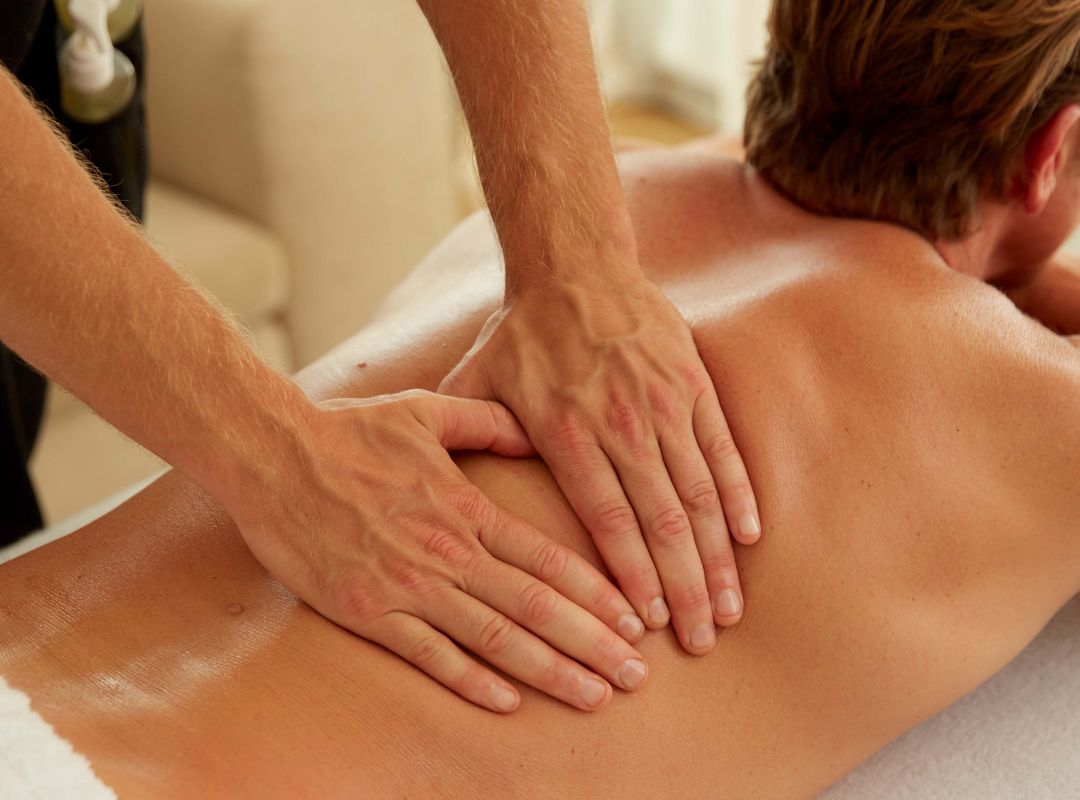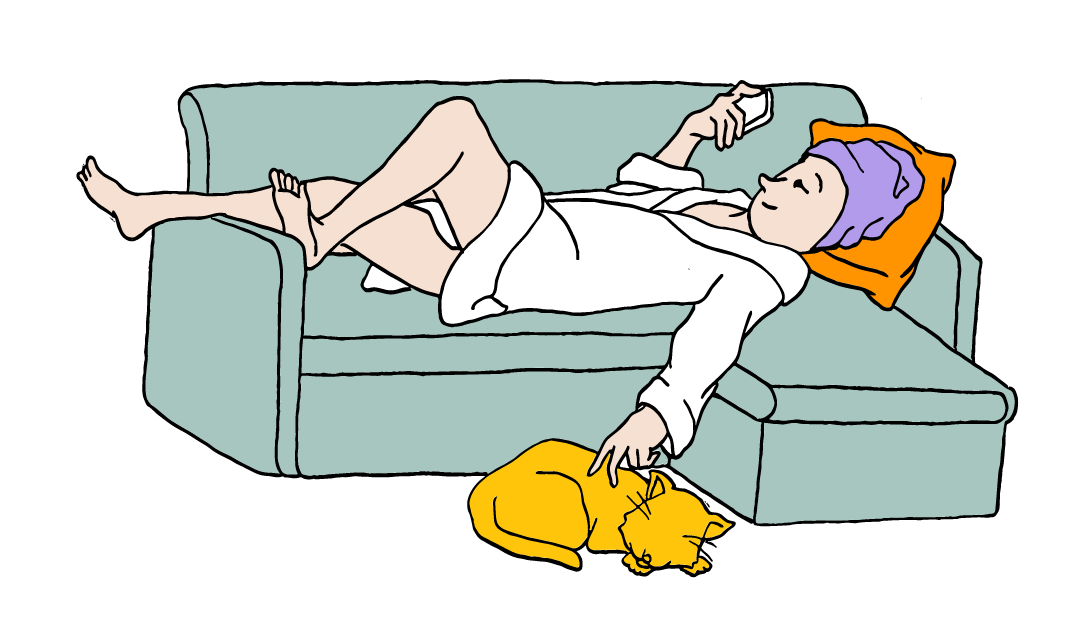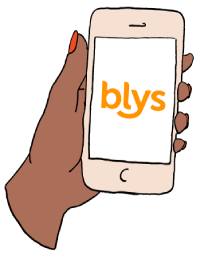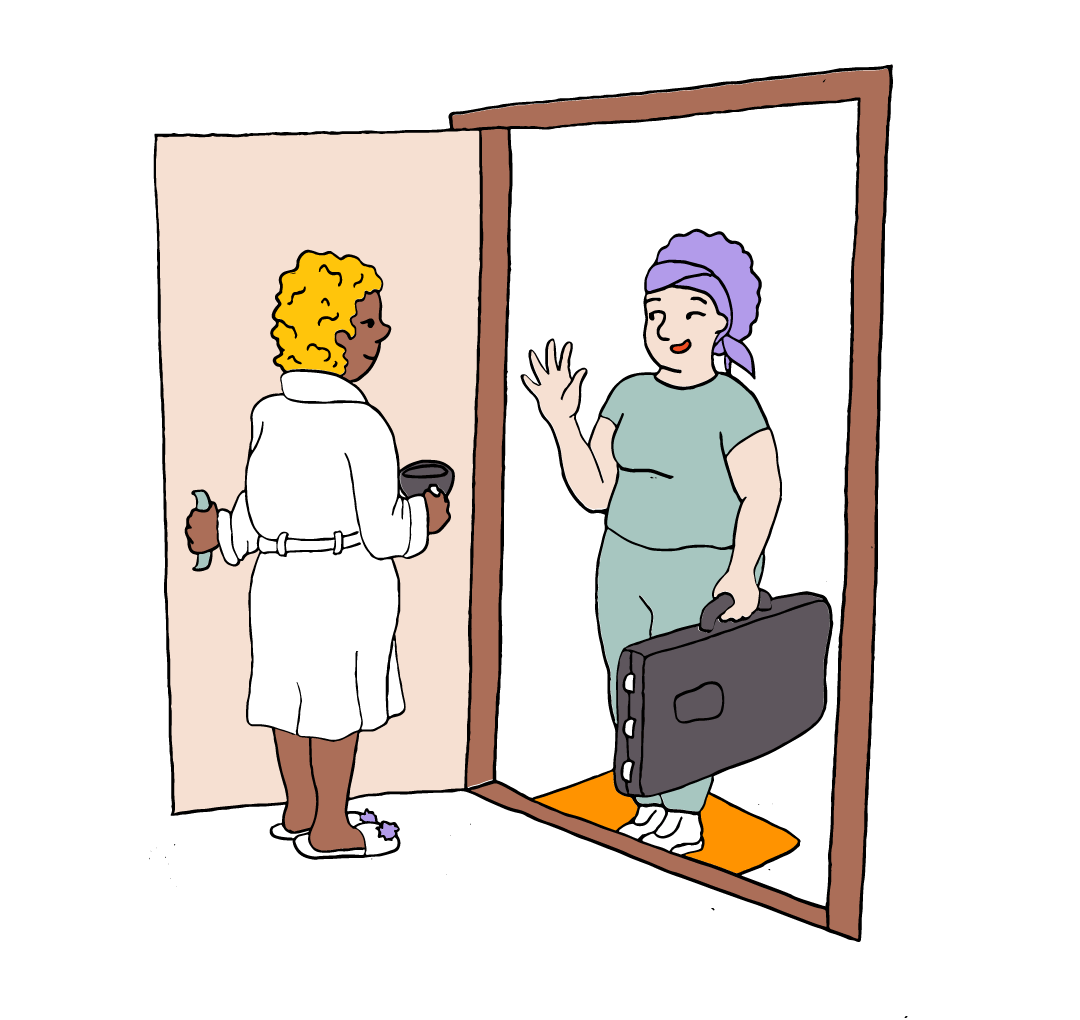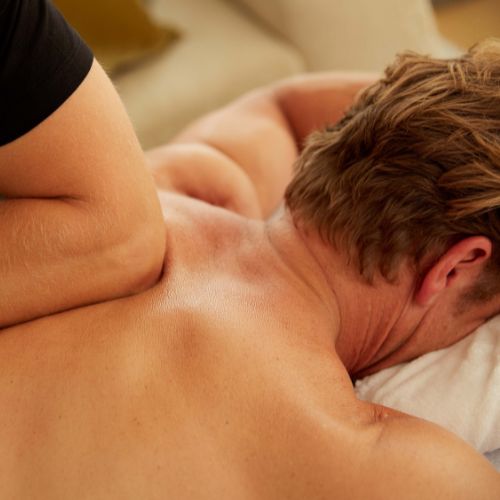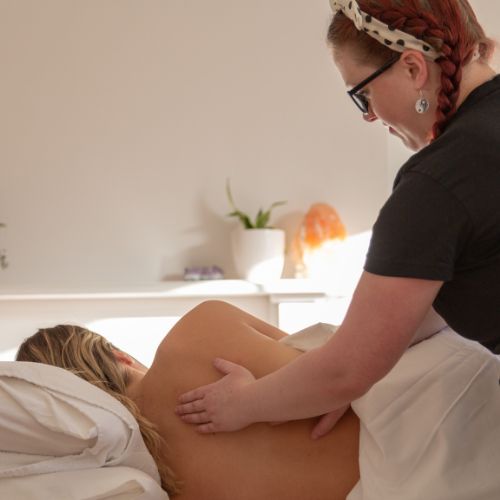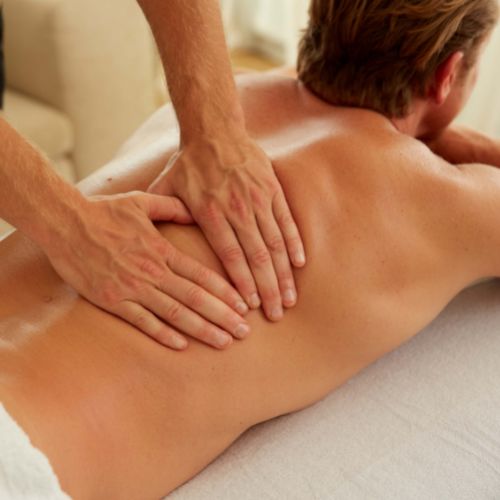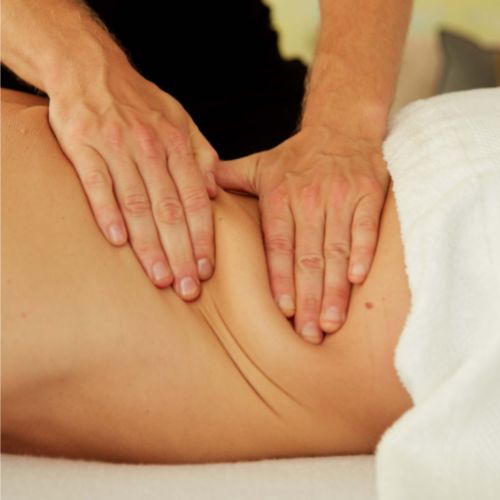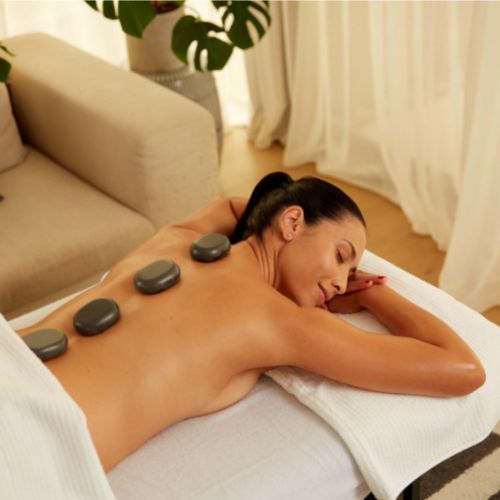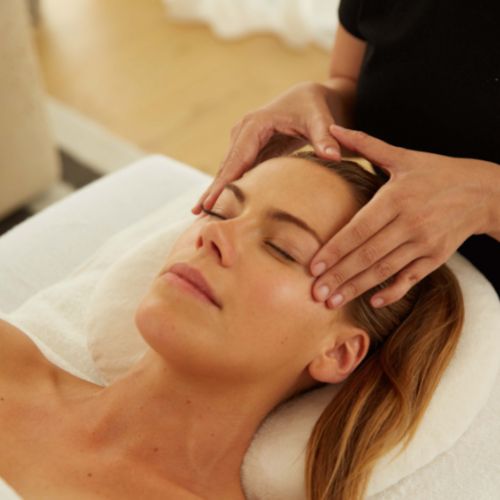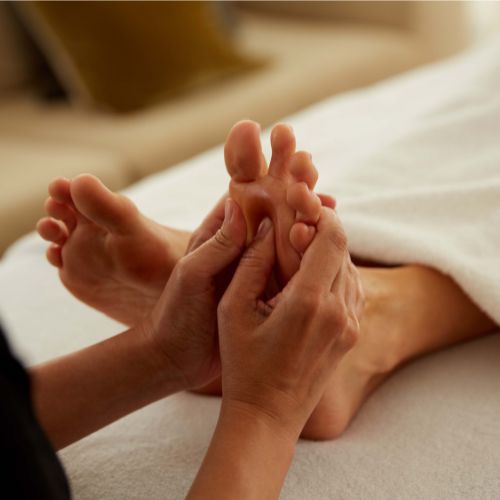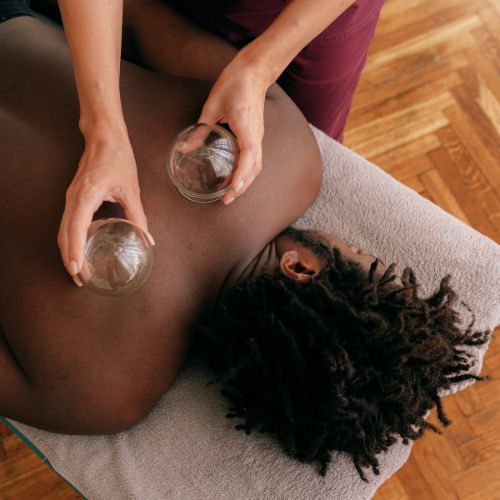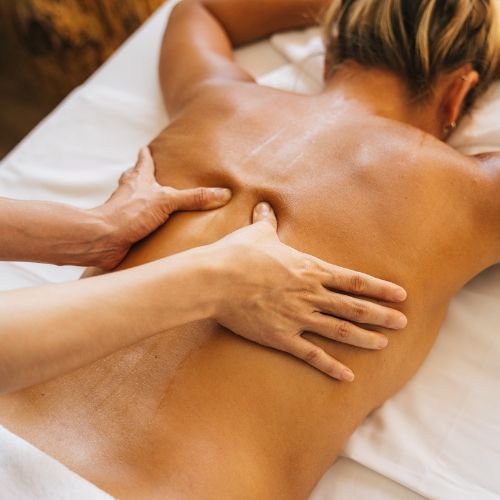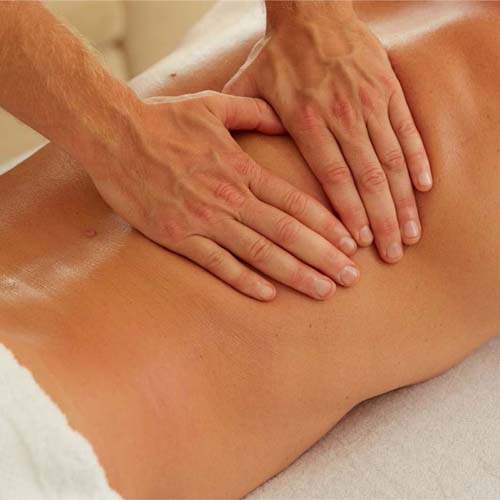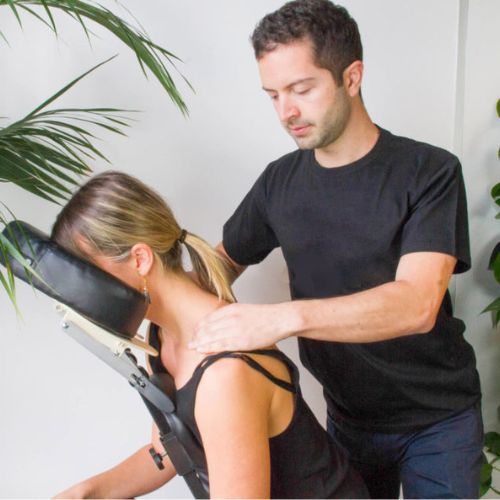Frequently Asked Questions
What does a deep tissue massage do?
A deep tissue massage aims to relieve muscle pain and tension by targeting areas within the body that have tissue-scarring and muscle adhesions (muscle knots). A deep tissue massage is good for enhancing recovery after intense exercise and managing chronic pain.
How painful is a deep tissue massage?
Deep tissue massage is not considered painful. However, It is common to feel discomfort during a deep tissue massage, as this treatment applies deep pressure areas of the body that have scarring or knots.
If you have any concerns regarding pain during or after your appointment, you should speak to your massage therapist during your consultation.
What should I expect after a deep tissue massage?
After a deep tissue massage, you may feel some discomfort for a couple of days after your appointment, as your muscles properly heal. There may be stiffness or soreness in your muscles, but it is not a painful recovery process.
Why is deep tissue massage so painful?
Due to the amount of pressure applied in a deep tissue massage, a level of discomfort is common. However, deep tissue massage should not be an overly painful treatment. If you have any concerns regarding pain during or after your appointment, you should speak to your massage therapist during your consultation.
How often should you get deep tissue massage?
Depending on your reason for a deep tissue massage, the regularity of your appointments may differ.
For those that have chronic pain or engage is highly intense exercise everyday, you can get a deep tissue massage daily.
For others, a few times a week or a few times a month may be enough to relieve pain and muscle tension.
Can I get a Deep Tissue Massage near me?
You sure can! To book your next Deep Tissue massage at home, head to the Blys website or download the app and have a professional therapist delivered directly to you. Blys serves across Australia, including the major cities of Sydney, Melbourne, Brisbane, Canberra, Adelaide and Perth. Check out which locations we serve near you.
What is the difference between massage therapy and deep tissue massage?
Massage therapy encompasses a wide range of massage techniques used for relaxation, stress relief, and addressing various health concerns, offering a holistic approach to well-being. Deep tissue massage, on the other hand, is a specialized form of massage therapy that focuses specifically on targeting deep-seated muscle tension and chronic pain by applying firm pressure and specific techniques to reach deep muscle layers.
Is deep pressure massage the same as deep tissue massage?
Deep pressure massage and deep tissue massage are related but not the same. Deep pressure massage refers to applying significant pressure during a massage, which can be used in various massage styles, including Swedish or sports massage, while deep tissue massage is a specific massage technique that aims to address deep-seated muscle tension and knots by targeting deep muscle layers with focused, intense pressure and specific strokes.
Which massage is better Swedish or deep tissue?
The answer is neither! Depending on what kind of treatment you are looking for, both swedish massage and deep tissue is effective at providing pain relief, reducing muscle tension and getting that massage after-glow.
Are there long-term benefits of deep tissue massage?
Recieving regular deep tissue massages can have long-term benefits such as:
Are deep tissue massages good for muscle growth?
Deep tissue massages are great for muscle growth! Because deep tissue massage breaks down, areas of scarred tissue and muscle adhesion, the body is able to recover quickly for you to be able to start to build up muscle again. Through improved circulation and blood pressure levels, your body will be able to respond better to exercise, meaning that muscle growth is enhanced.
What should you not do after a deep tissue massage?
After a Deep Tissue Massage, DO NOT:
– Take a shower immediately:
Having a hot shower straight after a deep tissue massage will cause your blood to flow to areas that have had pressure applied to them, meaning that your muscles may become inflamed.
– Not drink any water:
Because massage is a de-toxifying treatment, meaning that toxins are released within the body, to expel those toxins requires lots of work from your kidneys, and of course lots of water.
– Drink coffee, alcohol or fizzy drinks:
This may cause further dehydration and make your kidneys work harder to expel those blood toxins from the body.
– Do intense exercise or activity:
Of course, doing more exercise on top of muscles that have just been massaged and de-stressed will make your muscles seize up or cramp. You are also more likely to re-injure yourself as your muscles are quite loose.
How long should you rest after a deep tissue massage?
You should rest up to 24 hours after a deep tissue massage. It is recommended that you do not engage in high intensity activities or any exercise during this time period.
How long do deep tissue massages last?
At Blys, we offer three different lengths of time for deep tissue massage, 60, 90 or 120 minutes. Choosing the right length is dependent on the need for more or less in-depth massage.
Who would benefit from a deep tissue massage?
- Anyone with muscle tension and stiffness
- Individuals with chronic muscle pain
- Athletes and active individuals
- People with limited mobility
- Those experiencing muscle knots or adhesions
- Individuals with high stress levels
- People seeking deep relaxation
How to do a deep tissue massage for beginners?
For beginners, performing a basic deep tissue massage involves starting with gentle warming strokes using your palms or knuckles to gradually loosen the muscles. Then, apply firm, sustained pressure using your fingertips, knuckles, or elbows along the muscle fibres, focusing on areas of tension and discomfort, and remember to communicate with the recipient to ensure the pressure is comfortable and effective. But better yet, leave it to the experts and book a deep tissue massage with Blys instead!
